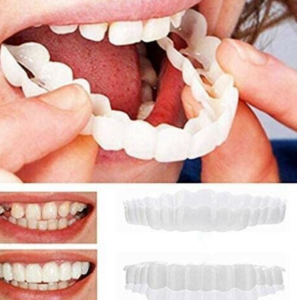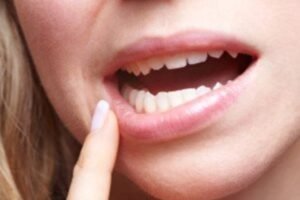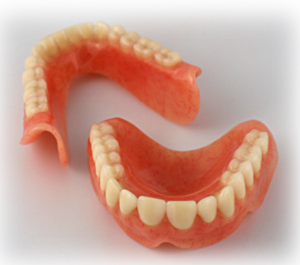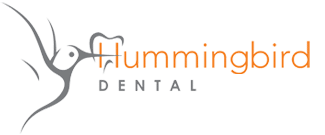Partial dentures for front teeth are a type of removable dental prosthesis that can fill the gaps left by missing front teeth. Partial dentures for front teeth are a popular dental solution for people with missing teeth.
They are removable dental prostheses made of a base that supports replacement teeth. The base can be made of various materials such as acrylic, resin, or metal, and it is attached to natural teeth using clasps or precision attachments. (Alprazolam) Partial dentures for front teeth can restore the functionality of biting and chewing and improve the appearance of the smile.
However, they may require some adjustments and a period of adaptation before they become comfortable to wear. Avoiding hard and sticky foods can help prevent damage to the dentures. Proper cleaning and maintenance are also important to ensure the longevity of the dentures and good oral health.
Types Of Partial Dentures
There are different types of partial dentures available, including those specifically designed for front teeth. These dentures can reliably improve your smile, while also providing a functional option for those with missing teeth. Flexible partials, acrylic partials, and temporary partials are some of the different options available.
There are several types of partial dentures available for those missing a few teeth. Removable and fixed partial dentures are two common options, with removable being able to be taken out for cleaning and fixed being cemented in. Flexible partials are another option, which are made of a soft material and are more comfortable to wear. Acrylic partials are made of a material that is easy to adjust and can be repaired if broken. Additionally, single tooth partials are an option for those only missing one tooth. When wearing partial dentures, it’s important to avoid hard or sticky foods that could damage them. With proper care, partial dentures can allow for normal eating and a confident smile.
Benefits Of Partial Dentures
Partial dentures for front teeth offer several benefits, such as filling the gaps between teeth, preventing the remaining teeth from shifting, and helping to maintain facial structure. They also provide improved chewing and speaking abilities, which can boost confidence and overall quality of life.
er, this type of denture may not be suitable for everyone. It’s best to consult with your dentist to determine which type of partial denture is right for you. Partial dentures offer a wide range of benefits, including improved chewing ability, restored confidence, and enhanced aesthetic appeal. With partial dentures, you can enjoy most foods without difficulty and smile with confidence, knowing that your missing teeth are replaced. So, if you’re considering getting partial dentures, be sure to consult with a qualified dentist to find the right option for your needs.
Partial Dentures For Front Teeth
Partial dentures for front teeth are a great solution for those missing one or more front teeth. They provide a natural looking restoration that blends in with your existing teeth and can also help with speech and eating.
Partial dentures for front teeth are available in different types such as temporary, acrylic, flexible, and removable. Flexible partial dentures are the most comfortable and less noticeable because of their gum-colored clasps. You can eat most foods without difficulty with partial dentures but should avoid hard or sticky foods that can damage them. Usually, no specific number of teeth is required for partial dentures, but the existing natural teeth must be placed strategically with a healthy tooth on each side of the gap to fill. Removable partial dentures use healthy teeth on both sides as anchors to keep them in place. Overall, partial dentures are a great solution for anyone missing their front teeth for various reasons and can provide the appearance and function of natural teeth.

Credit: www.busselldental.com
Eating With Partial Dentures
If you have partial dentures for your front teeth, it’s important to be mindful of the foods you eat. Avoid hard or sticky foods that can damage your dentures and be patient while you learn to eat comfortably again. With practice, you’ll be able to enjoy most foods without difficulty.
bit expensive compared to other types of partial dentures. As you adjust to your new partials, it is important to be mindful of the foods you eat. Avoid chewing on hard candies, nuts, or ice as this could cause damage to your dentures. Sticky foods like caramel or chewing gum should also be avoided as they can stick to your dentures and make it difficult to clean. Gradually introduce soft foods into your diet and take small bites to make it easier for you to chew. Rinse your mouth and dentures thoroughly with water after every meal. Before you know it, you’ll be eating all of your favorite foods with ease and confidence.
Cost Of Partial Dentures
The cost of partial dentures for front teeth may vary, depending on various factors such as the material, design, and your location. However, with partial dentures, you can restore your smile, improve speech, and enjoy eating most foods without difficulty.
Partial dentures for front teeth can be costly, with various factors affecting the final price. The cost range of partial dentures generally depends on the type of denture needed and the specifications of the patient. Factors affecting the cost of partial dentures include the location of the dental clinic, materials used, insurance coverage, and the complexity of the procedure. There are various types of partial dentures available such as acrylic, flexible, and temporary. Acrylic partial dentures cost less than flexible partial dentures. Fixed partial dentures are more expensive than removable partial dentures. Removable partial dentures usually require a tooth extraction, and the cost of the procedure range from $300 to $5,000. Learning to eat with partial dentures generally takes time. Partial dentures are tailored to the specific needs of the patient, and prices vary depending on the type of partial denture needed. Flexible partial dentures are one of the most comfortable types of partial dentures.
Maintenance And Care
To ensure the longevity of your partial dentures for front teeth, it’s important to take proper care and maintenance measures. Avoid chewing hard or sticky foods, clean your dentures daily with a soft brush and mild soap, and schedule regular check-ups with your dentist for any necessary adjustments or repairs.
Cleaning Partial Dentures: To maintain the durability and long-lastingness of your partial dentures, the regular cleaning is necessary. After eating, remove and rinse your dentures under running water. Brush the dentures with a soft-bristle toothbrush to remove food particles and debris. Use a mild soap or denture cleaner along with water to clean your partial dentures. Avoid using abrasive cleaners or stiff-bristle brushes. Soak your dentures in a denture cleanser overnight to remove stains and bacteria. Rinse thoroughly before wearing them. Storing Partial Dentures: When not in use, rinse your partial dentures and keep them in a proper container filled with clean water. The container should not be airtight to allow air circulation. Avoid using hot water to soak your dentures as it may cause warping. Keep your partial dentures away from pets and children. Do not leave your partial dentures dry out as it may cause them to change shape or become brittle. Contact your dentist immediately if you have any concerns or problems with your partial dentures.
Choosing The Right Partial Dentures
Finding the right partial dentures for front teeth can make all the difference in your appearance and your confidence. Consider options like flexible partial dentures, which are comfortable, less noticeable, and use gum-colored clasps. Make sure to strategically place existing natural teeth as anchors for your partial dentures to stay in place.
When choosing the right partial dentures for front teeth, there are several factors to consider. One important factor is consulting with a dentist, who can evaluate the individual’s oral health and recommend the appropriate type of partial denture. Removable and fixed partial dentures are two common types to consider. Removable partial dentures are held in place by small metal clasps that attach to neighboring teeth, while fixed partial dentures involve attaching artificial teeth to surrounding natural teeth. Other factors to consider include the number of teeth needed to fill the gap and the material used to create the partial denture. Flexible partial dentures are becoming a popular choice due to their comfort and natural appearance. With proper care and maintenance, partial dentures can allow individuals to eat comfortably and restore their smile.

Credit: www.dentureliving.com
Frequently Asked Questions Of Partial Dentures Front Teeth
Can You Eat With Front Teeth Partials?
Yes, you can eat with front teeth partials once you get used to wearing them. Avoid hard or sticky foods that can damage the dentures. No specific number of teeth is required to receive partial dentures, but existing natural teeth must be strategically placed.
The Flexible Partial Denture is the most comfortable type of partial denture with gum-colored clasps, but it comes at a higher cost. The base of front teeth partial dentures is usually metal covered in plastic, with replacement teeth made of plastic material.
How Many Teeth Do You Need For A Partial Denture?
There is no set number of teeth required for partial dentures. As long as there are healthy teeth on each side of the gap, a partial denture can be made. The removable denture uses the healthy teeth as anchors, providing stability.
Avoid hard or sticky food that could damage dentures. Flexible partial dentures are comfortable and cost more than other types.
What Is The Most Comfortable Type Of Partial Denture?
The most comfortable type of partial denture is the flexible partial denture. It is comfortable to wear and has gum-colored clasps that make it less noticeable. However, it is more expensive than other partial dentures. It is also considered a temporary option.
What Do Front Teeth Dentures Look Like?
Front teeth dentures typically feature a metal base covered in plastic with replacement teeth made of the same plastic material. If there are adjacent existing teeth, the dentist may place a crown over them. They should look natural and blend with your existing teeth.
With practice, you can enjoy most foods with partial dentures, but sticky or hard foods should be avoided.
Conclusion
Partial dentures for front teeth provide a great solution for people who have lost one or more teeth. They not only help restore your smile but also aid in speech and chewing. With various types of partial dentures available in the market, you can choose the one that suits your budget and comfort level.
It is essential to take good care of your dentures by following the instructions of your dentist to ensure their longevity. Overall, investing in partial dentures is a step towards a better quality of life and improved oral health.










